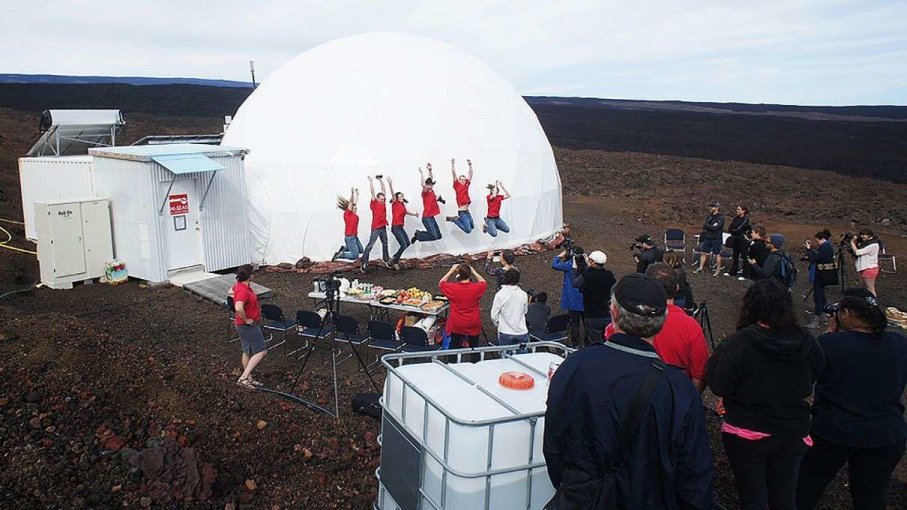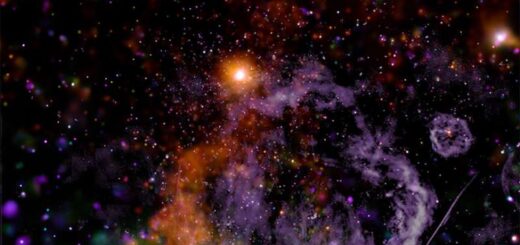A Year in Isolation: What We Learned From the Latest Mars Simulation

Six scientists recently walked out of a geodesic dome on the slopes of Mauna Loa, a volcano on the island of Hawaii, and for the first time in a year, they didn’t have to worry about wearing spacesuits.
It’s not that you need a spacesuit in Hawaii. But these intrepid souls — a German physicist, a Massachusetts Institute of Technology-trained engineer and pilot, a French astrobiologist, a NASA physician, and a Chinese architecture student — had spent the previous 365 days simulating a visit to the surface of Mars, as part of the University of Hawaii at Manoa’s fourth Hawaii Space Exploration Analog and Simulation (HI-SEAS) project.
HI-SEAS IV is one of several research efforts to test what it would be like for a team of astronauts to spend an extended period on the surface of another planet–living and working together in cramped quarters, struggling with the hindrance of proactive gear, and dealing with allocation of finite resources and unexpected crises. The Mars Society, a Colorado-based private organization, has been staging simulated Mars missions of varying lengths since 2000, including an upcoming mission that will begin this fall in the Utah desert and then continue at a base in the Canadian Arctic in 2017. In 2011, the Institute for Biomedical Problems (IBMP) of the Russian Academy of Sciences staged a 520-day mission, in which subjects lived in a simulated Mars camp inside a building.
“It’s like a dress rehearsal,” explains Mars Society president Robert Zubrin. “When you’re going to do a play, you want to see how it would work. Or perhaps a better analogy is a military field exercise. It’s different from a real war, because no one is trying to kill you, but no competent military would go without that sort of preparation for the real thing.”
To simulate the sort of isolation that actual Mars explorers might experience, for example, HI-SEAS designers put the base camp inside a geodesic dome on a mountainside 8,200 feet (2,500 meters) above sea level. The ersatz astronauts lived in a two-story dome with about 1,200 square feet (111.5 square meters) of space. That space contained work areas, a laboratory, an exercise room, a bathroom and shower, a kitchen and dining area, and six small individual bedrooms. Since Mars explorers would have to generate their own electricity, the HI-SEAS habitat used a 10-kilowatt solar array for power, backed up by batteries storing electricity for cloudy days. They also used a backup hydrogen-fuel-cell generator and a propane generator with a 1,000-gallon (3,785-liter) supply for backup. (Here’s a PDF document that describes the program.)
Video Player is loading.
Advertisement
The designers also sought to make communication with the outside world as difficult as it might be on Mars. When participants sent and received email, for example, the messages were delayed 20 minutes to simulate the hindrance of transmitting signals tens of millions of miles across space.
As the subjects went through their simulated space mission, behavioral researchers monitored data from sensors that the subjects wore around their necks and on their wrists, and continually questioned them about their experiences. One study, for example, sought to investigate how living on another planet might affect cognitive function. Another project tested whether astronauts could use self-guided stress-management programs to control anxiety and manage their sleep. But perhaps the most intriguing study was one on how teams of astronauts might use humor to get along better and make the mission more tolerable.
Just being the subjects of all these investigations was stressful enough, as French astrobiologist Cyprien Verseux explained in a blog post: “We are constantly monitored. First, with surveys; 7 a day at the very least. Some are about our health and mood: anyone sick or wounded? Anyone depressed, overeating or exhausted? Others are about between-crewmembers and mission support-crewmembers interactions. Who did one interact with lastly? Why? Was the interaction effective? Any fistfight over the last bag of chocolate chips? (OK, OK, I made the last one up.)”
Crew commander Carmel Johnston, in contrast, wrote about homesickness and isolation — things real Mars explorers will surely experience. “It’s already easy to see how different this year will be from our normal lives,” she said, just one month into the mission. “Everyone always asks what we will miss the most, and that isn’t an easy answer. Whenever you travel, you’ll find you miss things from home, but you become accustomed to your surroundings and find that you enjoy what’s around you rather than pining for what isn’t. What I will miss the most is being with my family and friends…being able to go running in the crisp Montana air … seeing my nephew grow older and smarter every day.”



 Creators of mankind
Creators of mankind Description of “Tall white aliens”
Description of “Tall white aliens” Where they came from?
Where they came from? About hostile civilizations
About hostile civilizations The war for the Earth
The war for the Earth “Tall white aliens” about eternal life
“Tall white aliens” about eternal life Video: “Nordic aliens”
Video: “Nordic aliens” Aliens
Aliens Alien encounters
Alien encounters The aliens base
The aliens base UFO
UFO Technology UFO
Technology UFO Underground civilization
Underground civilization Ancient alien artifacts
Ancient alien artifacts Military and UFO
Military and UFO Mysteries and hypotheses
Mysteries and hypotheses Scientific facts
Scientific facts


















